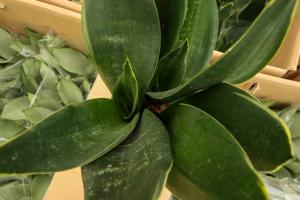Why do my tomato plants have holes in the leaves?
Tomatoes are a popular garden crop because of their versatility and flavor. However, tomato plants can be prone to a variety of pests and diseases, which can cause unsightly holes in the leaves. If your tomato plants are exhibiting these symptoms, there are a number of possible causes to consider.
Pests
One of the most common causes of holes in tomato plant leaves is pest damage. There are a number of insects that feed on tomato leaves, including flea beetles, spider mites, and tomato hornworms. These pests can cause small, circular holes in the leaves or larger, irregular-shaped ones. Identifying the specific pest causing the damage is important, as different pests require different treatments. For example, flea beetles can be controlled with insecticidal soap, while tomato hornworms may require handpicking or the use of Bacillus thuringiensis (BT).
Diseases
In addition to pests, tomato plants can also be susceptible to a variety of diseases that can cause holes in the leaves. One common disease is early blight, which causes lesions on the stems and leaves of the plant, eventually resulting in holes. Another disease is septoria leaf spot, which causes circular spots with gray centers and dark margins. These spots can merge, leading to the development of larger holes in the leaves. Fungal diseases like these can spread easily through water and soil, so careful management and prevention are key.
Environmental factors
Finally, environmental factors can also contribute to the development of holes in tomato plant leaves. Overwatering, for example, can lead to root rot and weakening of the plant, making it more susceptible to pests and diseases. Similarly, inadequate sunlight or poor soil quality can impact the vigor and health of the plant, making it more vulnerable to damage from external factors.
Prevention and treatment
To prevent holes from developing in your tomato plant leaves, it is important to provide optimal growing conditions and be vigilant for signs of pests and diseases. This includes selecting disease-resistant varieties, providing adequate spacing and sunlight, and properly watering the plants. If you do notice holes in the leaves, it is important to identify the cause before treating. Depending on the severity of the damage, you may be able to simply remove severely affected leaves or apply natural remedies such as neem oil or diatomaceous earth. For more serious infestations or diseases, chemical treatments may be necessary.
In conclusion, holes in tomato plant leaves can be caused by a variety of factors, including pests, diseases, and environmental factors. By identifying the cause and taking appropriate measures to prevent and treat the damage, you can help ensure healthy, productive tomato plants in your garden.

 how many times do yo...
how many times do yo... how many planted tre...
how many planted tre... how many pine trees ...
how many pine trees ... how many pecan trees...
how many pecan trees... how many plants comp...
how many plants comp... how many plants can ...
how many plants can ... how many plants and ...
how many plants and ... how many pepper plan...
how many pepper plan...































